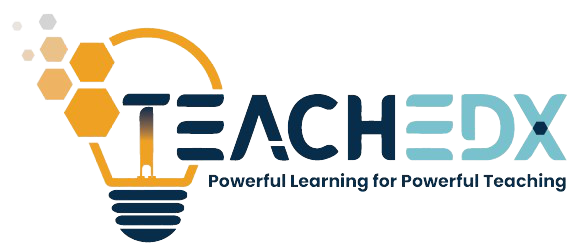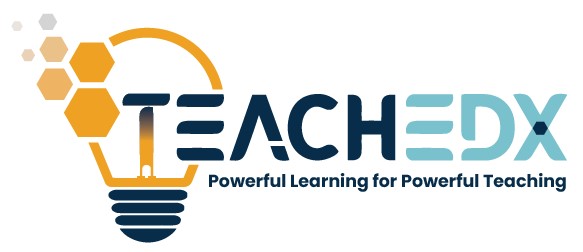IMPLEMENTING PROBLEM-BASED LEARNING (PBL) PART II
- Venessa Powell
- January 29, 2024
In last week’s post, I encouraged you to try implementing problem-based learning (PBL) in your next lesson. It is one of my favourite instructional strategies because it gives school curricula real-world utility. In this week’s post, I share in more detail about the PBL process, its benefits and its challenges.
What is PBL?
Problem-Based Learning (PBL) is an instructional methodology that encourages students to learn and apply knowledge to real-world problems. In PBL, real-world problems are used as the starting point for learning. Writing and implementing PBL lessons can offer numerous benefits and also present various challenges. It is one of the student-centred instructional approaches recommended by the National Standards Curriculum (NSC) because it aligns well with the NSC’s focus on students developing 21st-century skills.
The PBL Process
The PBL process is typically divided into distinct phases that guide the learning experience from problem introduction to reflection on solutions and learning. The general framework for the phases of a PBL lesson are:
- Introduction to the Problem: The teacher presents a problem to the students, often as a scenario requiring a solution. This problem should be complex, open-ended, and relevant to the curriculum.
- Understanding the Problem: Students discuss the problem to understand the context and the specific issues it presents. They identify what they know and what they need to learn to address the problem.
- Information Gathering and Research: In this phase, students determine what knowledge they lack and where they can acquire the necessary information. They engage in research, which can include reading, interviews, experiments, and other methods of data collection.
- Idea Generation: Students brainstorm possible solutions to the problem, using their creativity and the knowledge they have acquired through research. This is an exploratory phase, where multiple ideas are encouraged, and judgment of their feasibility is suspended.
- Synthesis and Solution Building: Students analyze their ideas and begin to synthesize them into more coherent solutions. They evaluate the feasibility, strengths, and weaknesses of each idea to construct a viable solution.
- Critical Appraisal and Refinement: The proposed solutions are critically appraised by the students themselves, their peers, and the teacher. Feedback is used to refine and improve the solutions, leading to a more polished and comprehensive response to the problem.
- Presentation: Students present their final solutions to the class or a broader audience. This phase allows students to articulate their thought processes, the knowledge they have applied, and the rationale behind their chosen solutions.
- Assessment and Evaluation: Both the process and the final product are assessed. Teachers may use rubrics or other evaluation tools to measure students’ understanding, application of knowledge, problem-solving skills, and collaboration.
- Reflection: Students and teachers reflect on the learning experience, discussing what worked well and identifying areas for improvement. Reflection helps students consolidate their learning and consider how they can apply their new knowledge and skills in the future.
- Feedback and Iteration: Based on the reflection and assessment, teachers and students can engage in a feedback loop to refine their approach to PBL. This may involve revisiting earlier phases or planning for future PBL activities with adjustments based on the experience.
Benefits of PBL
In the context of 21st-century learning, there are some skills deemed important for successful participation in a modern society. Implementing problem-based learning can help students develop these skills Some benefits include:
- Develops Critical Thinking and Problem-Solving Skills: PBL encourages students to think critically about real-world problems and to develop and apply problem-solving strategies.
- Promotes Deep Understanding: By engaging with problems that require the application of knowledge, students often develop a deeper understanding of the subject matter than they might through traditional instruction.
- Increases Student Engagement: PBL lessons are usually more engaging for students because they involve active learning and are often related to issues that students find relevant and interesting.
- Fosters Self-Directed Learning: Students in PBL settings learn to take responsibility for their learning, which can lead to increased motivation and self-directed inquiry.
- Enhances Collaboration Skills: PBL often involves collaborative group work, which can help students develop teamwork and communication skills that are valuable in both academic and professional settings.
- Integrates Multiple Disciplines: Well-designed PBL lessons can integrate concepts from multiple disciplines, showing students how different fields of knowledge intersect and apply to real-world situations.
- Builds Intrinsic Motivation: Students often feel more motivated to learn when they see the relevance of the material to real-life problems and when they have a say in the learning process.
- Improves Retention: Students are more likely to remember what they have learned because PBL involves active problem-solving and often emotional engagement with the subject matter.
Challenges of PBL
Before attempting to implement problem-based learning, you should be aware of some of its challenges. An awareness of these challenges can help you to better manage their effects on your lesson. These challenges include:
- Time-Consuming Preparation: Designing effective PBL scenarios and lessons requires a significant upfront investment of time and effort from teachers. Real-world contexts to which curricula topics can be applied are not always obvious.
- Requires Shift in Teacher Role: Teachers must transition from being the central source of information to being facilitators of learning, which can be challenging for those accustomed to traditional teaching methods.
- Demands High-Quality Resources: Implementing PBL often requires access to a wide range of resources, which may not be readily available in all educational settings.
- Assessment Difficulties: Assessing student performance in a PBL context can be complex, as traditional tests and quizzes may not capture the depth and breadth of learning that occurs. Creating rubrics helps minimize these difficulties by clarifying what knowledge and skills are to be measured.
- Group Dynamics Issues: Group work can sometimes lead to issues such as unequal participation, conflict, and challenges in collaboration, which need to be managed effectively. Students may need to be explicitly taught how to work together.
- Requires Student Adaptation: Students who are used to traditional teaching methods may initially struggle with the autonomy and self-directed nature of PBL.
- Variability in Learning Outcomes: Because PBL allows for multiple approaches and solutions, learning outcomes can vary widely among students, which can be challenging to accommodate and assess fairly.
- Curriculum Constraints: Aligning PBL with existing curriculum standards and requirements can be difficult, as PBL is not always conducive to covering a predetermined set of content in a sequential manner.
Despite these challenges, you will find that the benefits of PBL make it a worthwhile approach to instruction. The challenges can often be mitigated with careful planning, ongoing professional development, and adjustments to the classroom environment and educational system to support PBL methodologies. It is also crucial to establish clear objectives, provide scaffolding to guide students through the PBL process and develop appropriate assessment tools that capture the complexity of learning in a PBL environment.
To further reduce the challenges, you can collaborate with other teachers to share best practices and PBL lesson plans, and schools can invest in training teachers to become effective facilitators in a PBL setting. Additionally, educators can gradually introduce PBL to students, starting with more structured problems and progressively giving more autonomy as students become comfortable with the PBL approach.
Conclusion
Overall, while PBL may require a significant shift in classroom dynamics, teacher roles, and student expectations, it can be an incredibly rewarding approach that not only enhances academic skills but also prepares students with the critical thinking, problem-solving, and collaborative skills they will need in the future. With the right support and resources, the challenges of PBL can be managed, allowing both students and teachers to reap its substantial benefits.
Other articles that you may find interesting:
Like this article?

Venessa Powell
I never wanted to become a teacher. As a matter of fact, anybody who knew me knew that I was set on becoming a graphic designer. Some would say it was by divine intervention others may call it the universe redirecting me, but circumstances led me to teachers’ college at the end of high school where I pursued secondary mathematics education.


